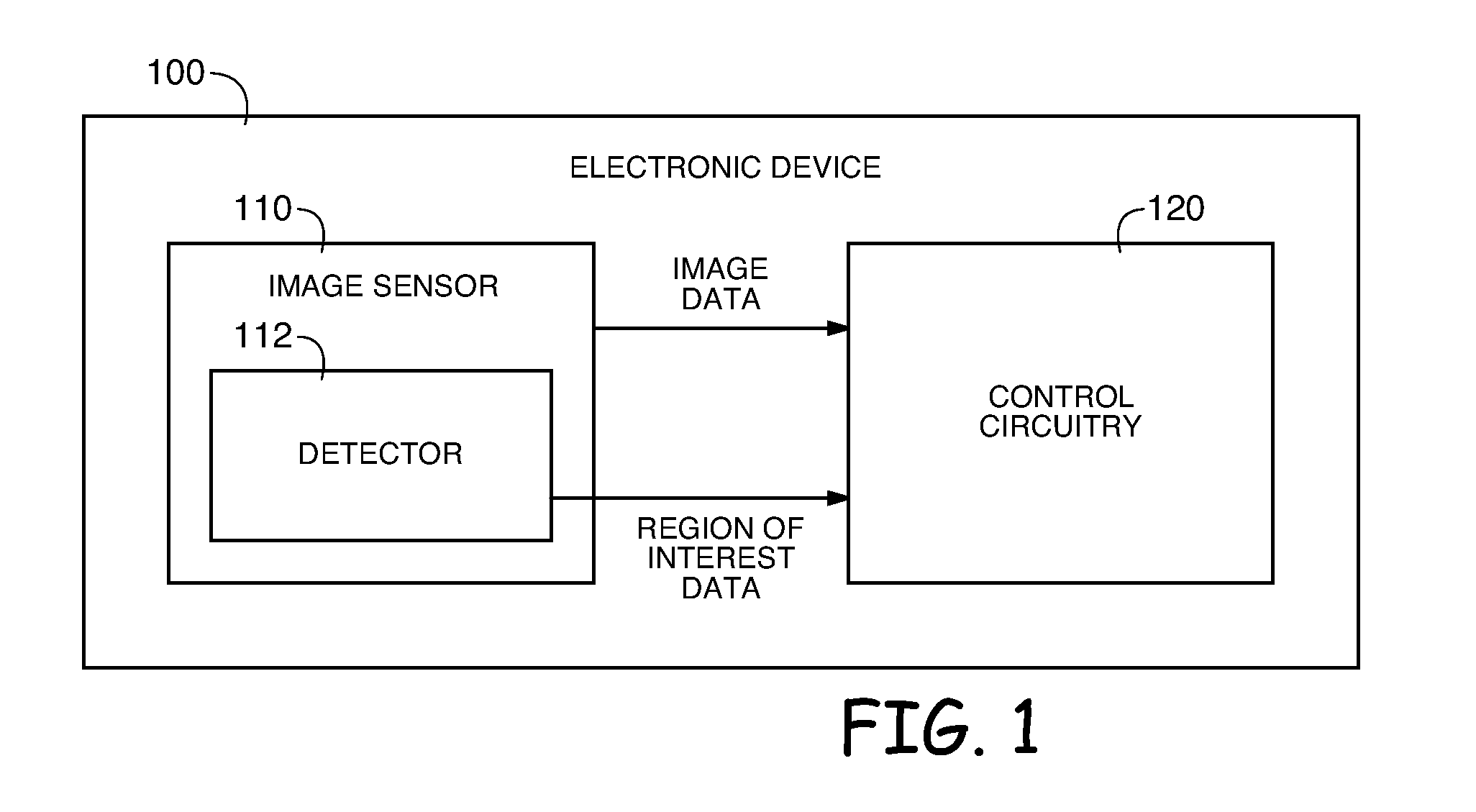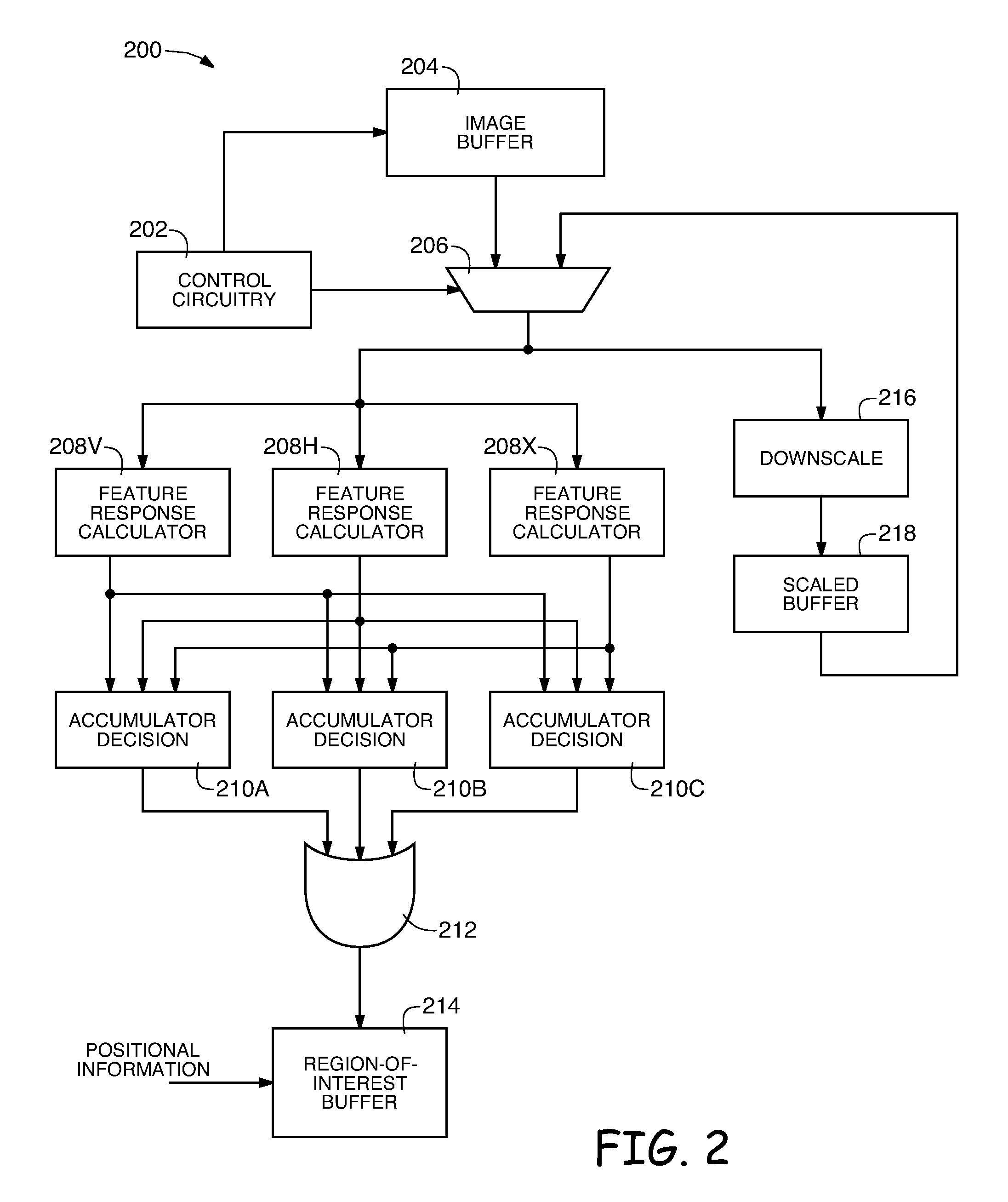Use of z-order data in an image sensor
a technology of image sensor and z-order data, which is applied in the field of use of z-order data in the image sensor, can solve the problems of large processing time and power in the camera, unsatisfactory large size, and large area consumption,
- Summary
- Abstract
- Description
- Claims
- Application Information
AI Technical Summary
Problems solved by technology
Method used
Image
Examples
Embodiment Construction
[0013]FIG. 1 is a schematic view of an illustrative electronic device configured in accordance with embodiments of the invention. Electronic device 100 can be any type of user device that utilizes an image sensor (embodied here as image sensor 110) and is controlled generally by control circuitry 120. For example, electronic device 100 can include a camera, such as a computer camera, still camera, or portable video camera. Electronic device 100 can also include any other components in a typical camera (or otherwise), which are not depicted in FIG. 1 to avoid any distractions from embodiments of the invention.
[0014]Image sensor 110 can capture image data corresponding to a streaming image. For example, image sensor 110 can include any combination of lenses and arrays of cells (e.g., charge-coupled devices (CCDs) or CMOS sensor cells) for capturing pixels. Image sensor 110 can further include detector 112. Detector 112 may be configured to identify relevant information about the strea...
PUM
 Login to View More
Login to View More Abstract
Description
Claims
Application Information
 Login to View More
Login to View More - R&D
- Intellectual Property
- Life Sciences
- Materials
- Tech Scout
- Unparalleled Data Quality
- Higher Quality Content
- 60% Fewer Hallucinations
Browse by: Latest US Patents, China's latest patents, Technical Efficacy Thesaurus, Application Domain, Technology Topic, Popular Technical Reports.
© 2025 PatSnap. All rights reserved.Legal|Privacy policy|Modern Slavery Act Transparency Statement|Sitemap|About US| Contact US: help@patsnap.com



